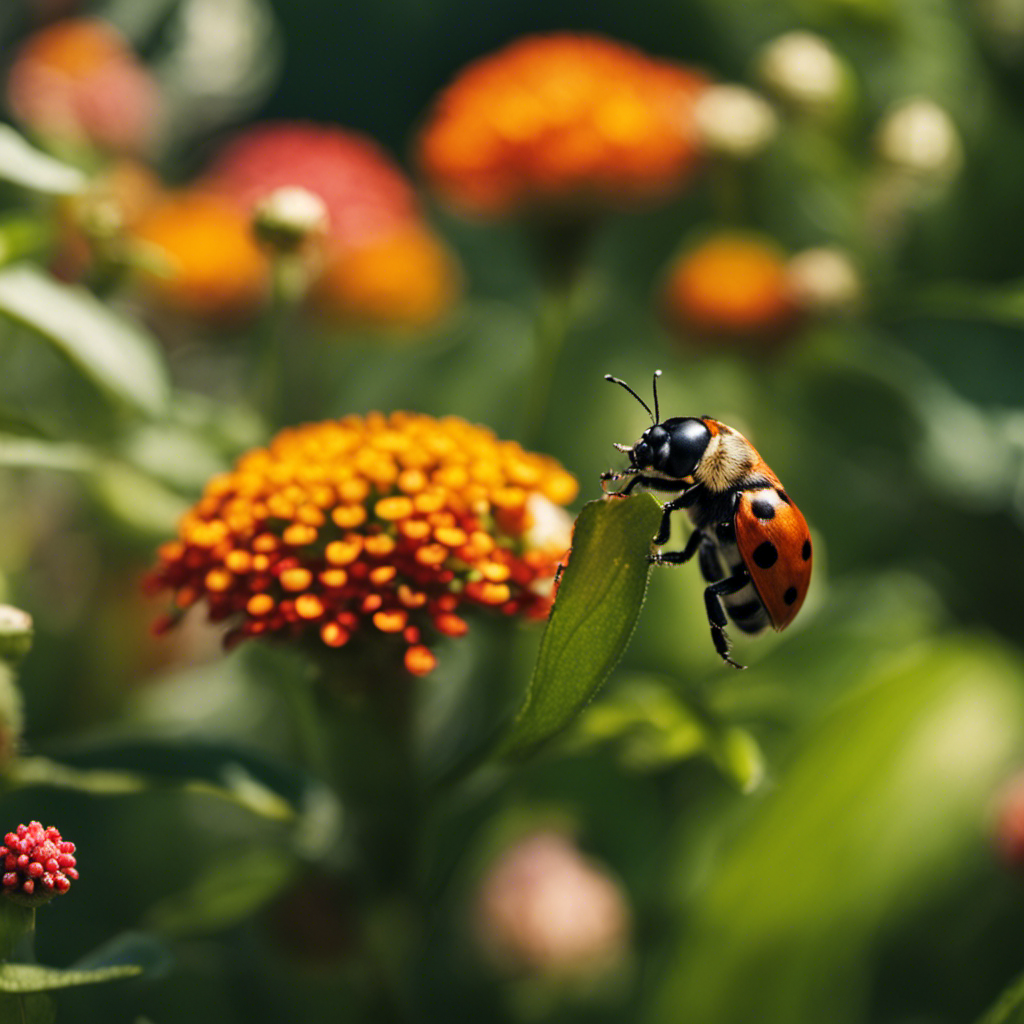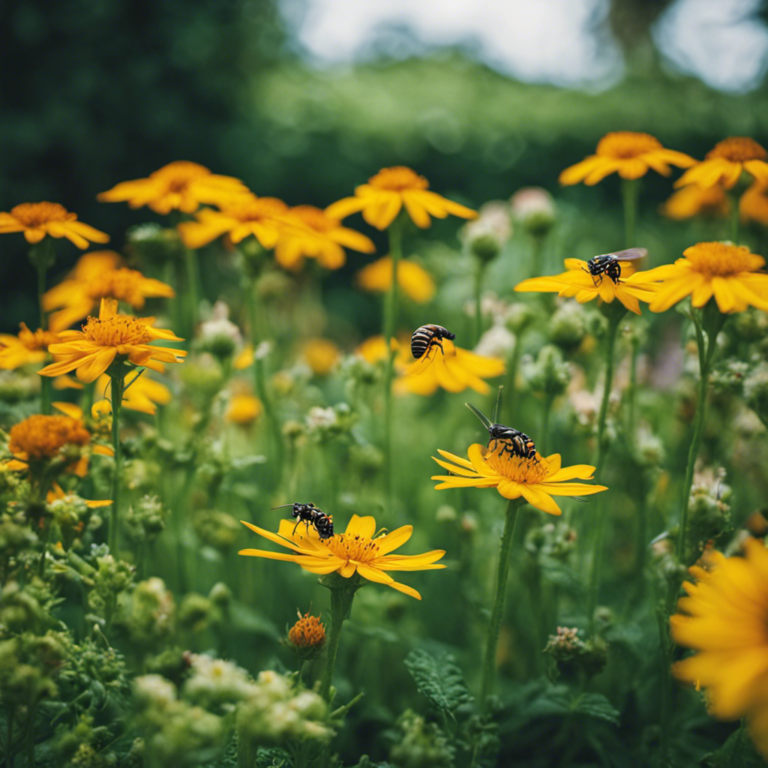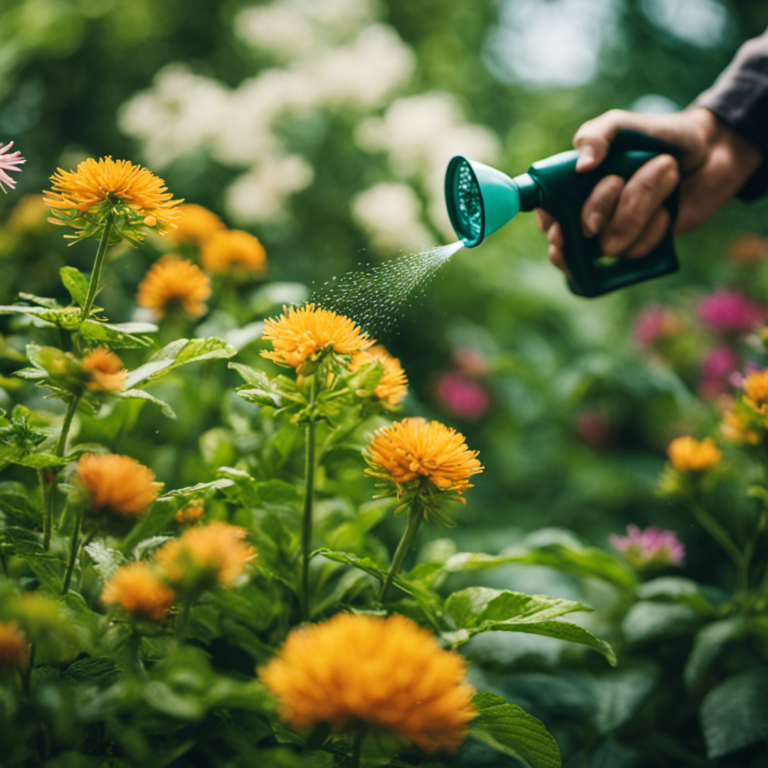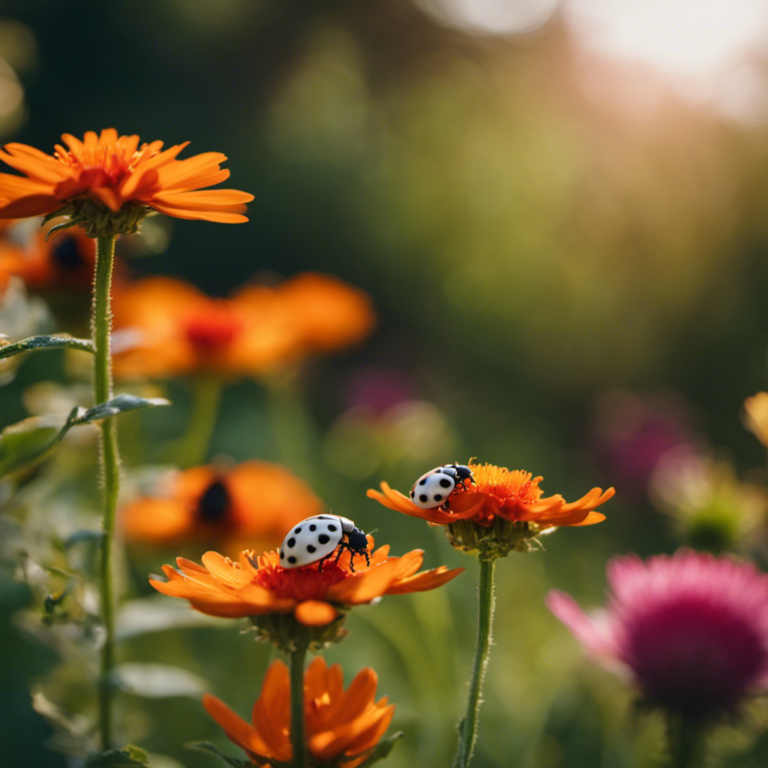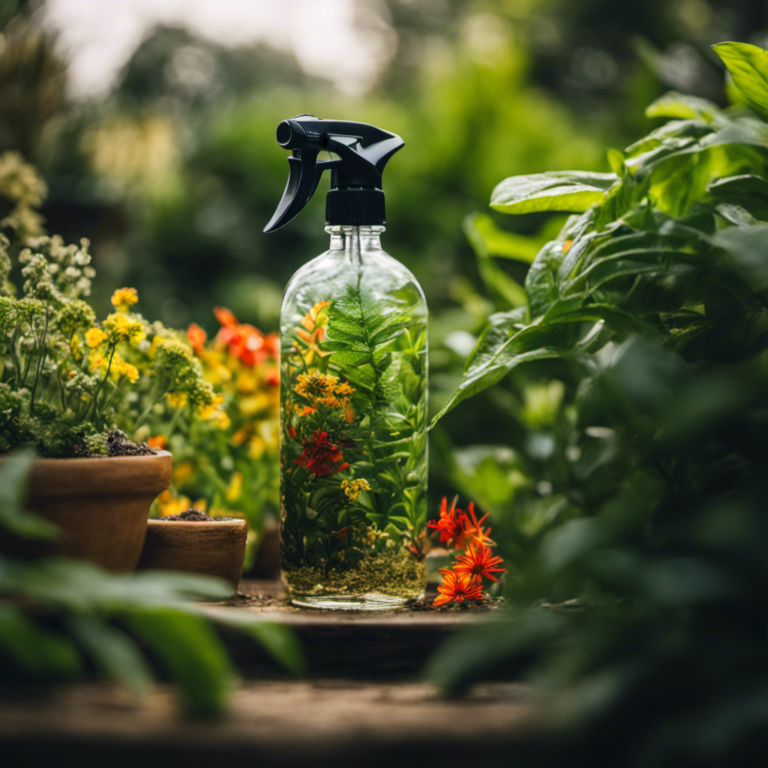Are garden pests causing damage to your plants?
Don’t worry, we have the perfect guide to help you naturally tackle this problem.
No more harmful chemicals – our eco-friendly solutions will not only protect your garden but also promote a healthy environment.
By planting companion flowers and attracting natural predators, you can effectively eradicate those pests and ensure your garden thrives.
Let’s start your journey to a pest-free paradise!
Key Takeaways
Eliminating Garden Pests Naturally: A Practical Guide
As you work towards getting rid of garden pests without resorting to harmful chemicals, you have taken on the important role of caring for a thriving ecosystem. By planting companion flowers and herbs, creating physical barriers and traps, and attracting natural predators and beneficial insects, you have achieved a harmonious balance in your garden.
Through the use of homemade pest repellents and strategic crop rotation, you have embraced environmentally-friendly practices. It’s crucial to remember that your garden represents more than just a piece of land; it symbolizes your dedication to sustainability and the beauty of nature.
Plant Companion Flowers and Herbs
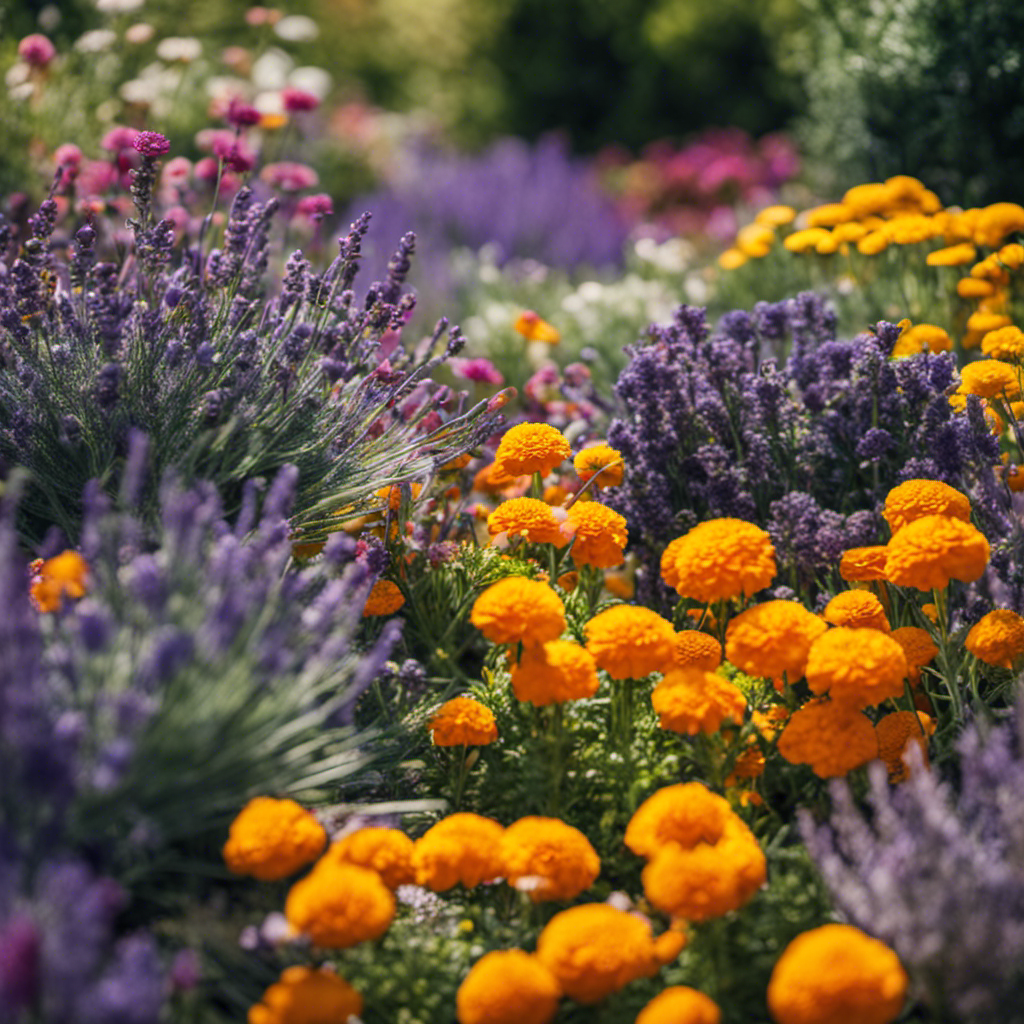
To effectively repel garden pests, consider planting companion flowers and herbs in your garden. Companion planting is a practice where certain plants are grown together to benefit each other.
By incorporating this method, you can naturally deter pests and attract pollinators to your garden. Companion flowers like marigolds and nasturtiums are known for repelling harmful insects such as aphids and beetles. These flowers also attract beneficial insects like ladybugs and bees, which aid in pollination.
Herbs like basil and parsley not only add flavor to your dishes but also repel pests like mosquitoes and flies. Additionally, they attract beneficial insects like hoverflies and wasps, which prey on harmful garden pests.
Install Physical Barriers and Traps
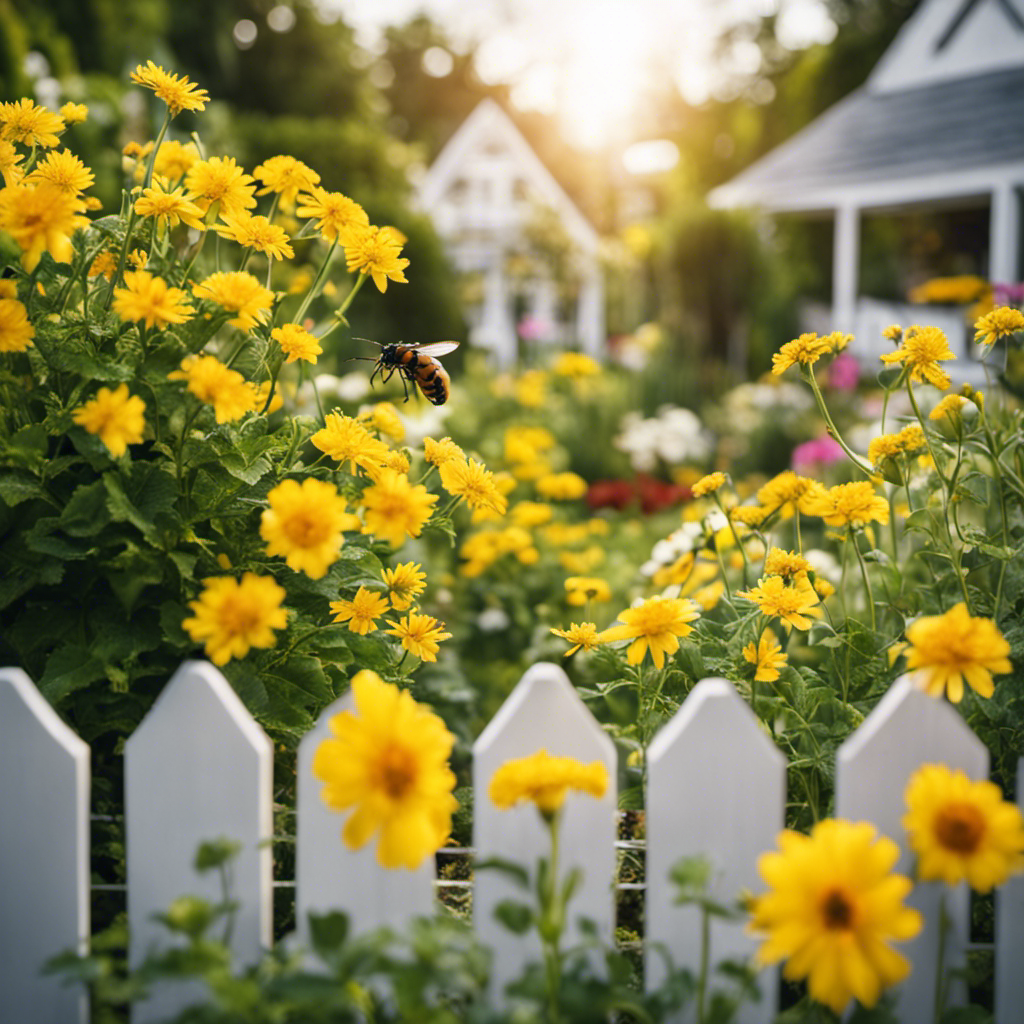
Protecting your garden from pests is essential for a successful harvest. One effective method is to install physical barriers and traps.
These pest exclusion techniques will help create a pest-free environment in your garden:
-
Fencing: Build a sturdy fence around your garden to keep out larger pests like rabbits and deer. Ensure the fence is tall enough and buried deep to prevent them from jumping over or digging under it.
-
Netting: Cover your plants with fine-mesh netting to prevent birds and insects from damaging your crops. Opt for netting with small mesh sizes to effectively keep even the tiniest pests at bay.
-
Row Covers: Shield your plants from flying pests such as moths and butterflies by using lightweight fabric row covers. These covers create a physical barrier while still allowing sunlight and water to reach your plants.
-
Traps: Place traps strategically throughout your garden to catch specific pests like slugs, snails, and rodents. Beer traps work well for slugs and snails, while snap traps are effective for mice and rats. Regularly check and remove trapped pests.
By implementing these physical barriers and traps, you can safeguard your garden and ensure a pest-free environment for your plants to thrive.
Happy gardening!
Utilize Natural Predators and Beneficial Insects
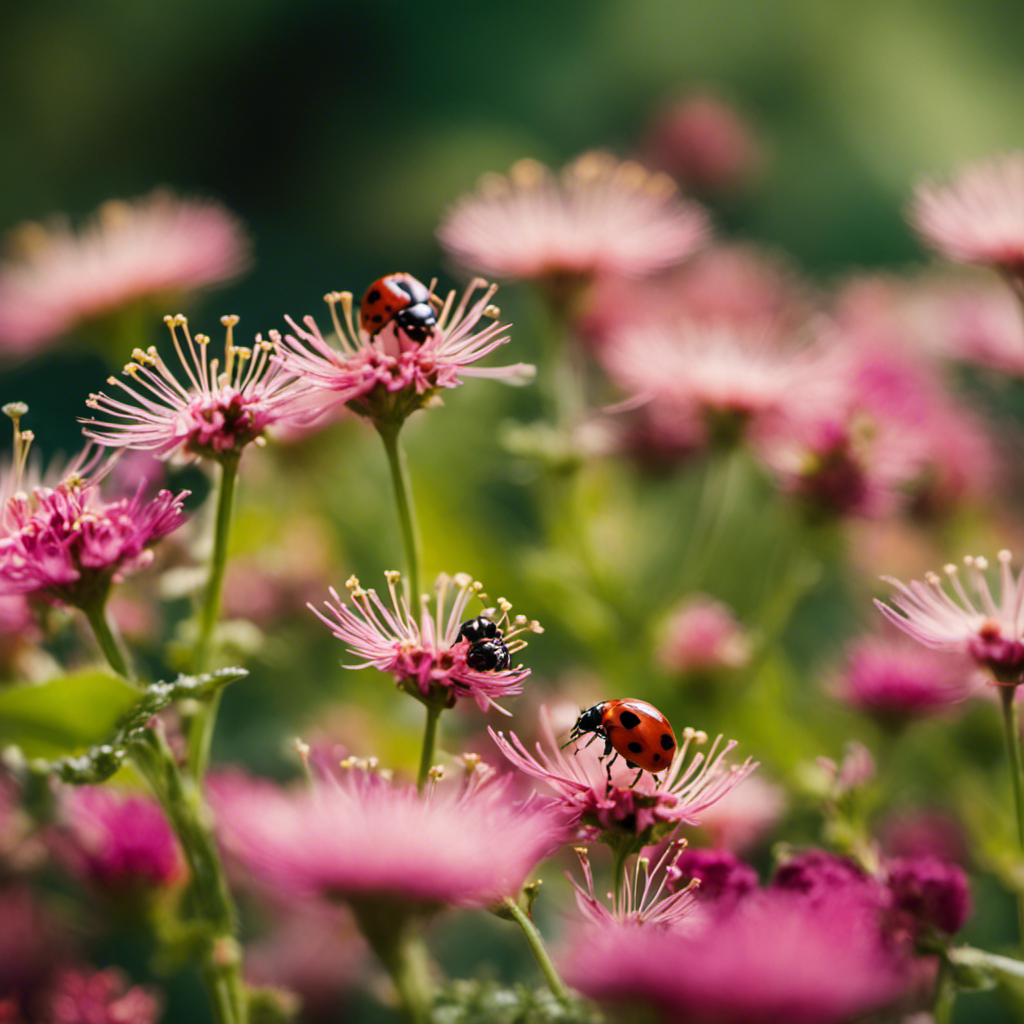
Utilize the Power of Natural Predators and Beneficial Insects
Incorporating natural predators and beneficial insects into your garden can be a game-changer when it comes to pest control. By attracting pollinators and using organic pesticides, you can establish a balanced ecosystem that safeguards your garden from harmful insects while promoting its overall health.
One effective strategy to attract pollinators is to plant a diverse selection of flowers that offer nectar and pollen. Bees, butterflies, and other insects will be naturally drawn to your garden, aiding in pollination and helping to keep pest populations in check. Additionally, by utilizing organic pesticides derived from natural sources like neem oil or garlic spray, you can safeguard your plants without harming beneficial insects.
To better understand which beneficial insects you should encourage in your garden, here is a table showcasing some common ones and the pests they prey on:
| Beneficial Insect | Preys On |
|---|---|
| Ladybugs | Aphids, mites |
| Lacewings | Aphids, mealybugs |
| Praying mantis | Caterpillars, flies |
| Ground beetles | Slugs, snails |
Make Homemade Pest Repellents and Sprays
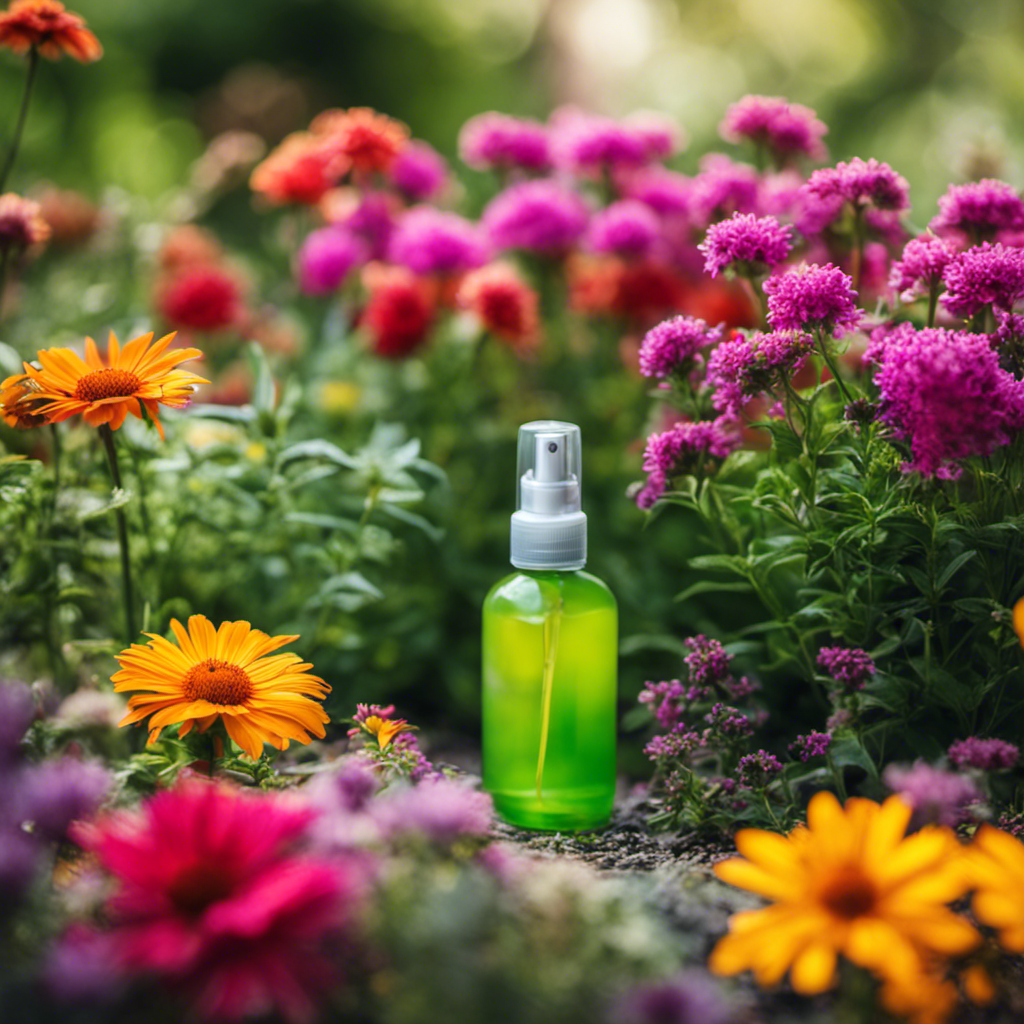
Make Homemade Pest Repellents and Sprays
Taking control of garden pests is as simple as making your own homemade pest repellents and sprays. Not only are these do-it-yourself insect repellents effective, but they’re also eco-friendly and safe for your plants.
Here are four easy recipes to create your own bug spray using essential oils:
-
Peppermint Oil Spray: Combine 10 drops of peppermint essential oil with 1 cup of water in a spray bottle. Give it a good shake and spray it on your plants to keep ants, aphids, and beetles away.
-
Garlic and Onion Spray: Blend 2 cloves of garlic and 1 onion with 4 cups of water. Let it sit overnight, strain the mixture, and pour it into a spray bottle. This homemade spray will repel slugs, snails, and caterpillars.
-
Neem Oil Spray: Mix 2 teaspoons of neem oil with 1 liter of water. Spray this solution on your plants to deter a wide range of pests, including mites, whiteflies, and scale insects.
-
Chili Pepper Spray: Blend 2 tablespoons of chili powder with 1 quart of water. Allow it to sit for a day, strain the liquid, and then spray it on your plants to repel insects like aphids and spider mites.
Implement Crop Rotation and Intercropping Strategies
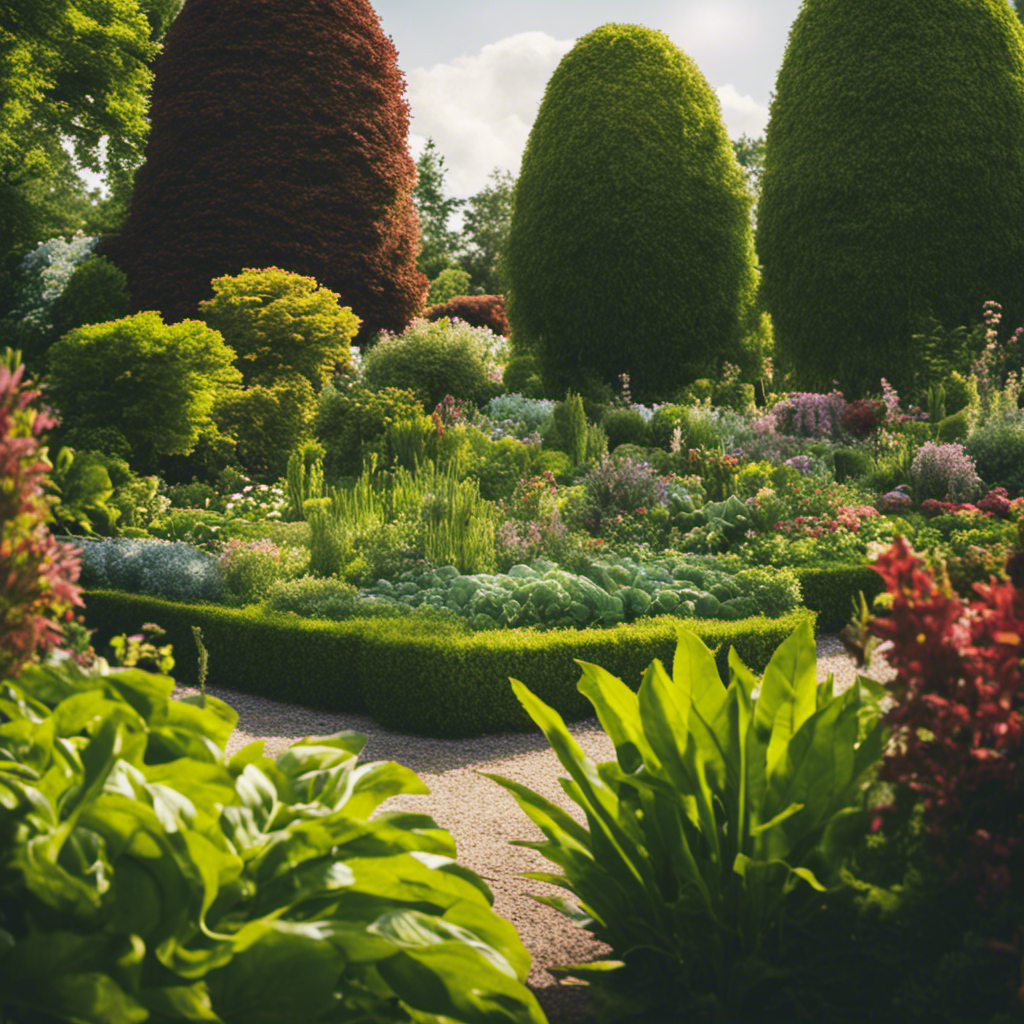
Incorporate crop rotation and intercropping strategies to effectively manage garden pests naturally.
Crop rotation involves planting different crops in different areas of your garden each year. This breaks the life cycle of pests that may be specific to certain crops, reducing pest populations and decreasing the need for chemical pesticides.
Intercropping, on the other hand, involves planting different crops together in the same space. This technique confuses and deters pests with its diverse range of smells, textures, and colors. Additionally, intercropping improves soil health and increases yields.
Conclusion
Eliminating Garden Pests Naturally: A Practical Guide
As you strive to get rid of garden pests without the use of harmful chemicals, you’ve taken on the role of a caretaker for a flourishing ecosystem. By planting companion flowers and herbs, setting up physical barriers and traps, and attracting natural predators and beneficial insects, you’ve achieved a harmonious balance in your garden.
Through the use of homemade pest repellents and strategic crop rotation, you’ve embraced environmentally-friendly practices.
Keep in mind that your garden represents more than just a piece of land; it symbolizes your dedication to sustainability and the wonders of nature.
